Connecting to the Omega’s Command Line
Now that your Omega is setup, connected to a WiFi network, and updated, you’ll want to connect to it to start building and inventing.
There are two ways to connect to the Omega’s command line:
- Using the local network to connect through SSH
- Using a USB connection to connect to the serial terminal
Both methods have their advantages and disadvantages. We recommend using SSH since it allows you to control wirelessly any Omega that’s connected to your WiFi network.
The Command-Line Interface
The command-line is a way of interacting with a computer by sending commands in the form of single lines of text. This is different from “point and click” graphical user interfaces (GUI) found on most PC operating systems.
Command-line interfaces provide a more concise and powerful means to control a program or operating system, especially with regards to scripting (Shell Scripting, Python, etc).
This interface may seem overwhelming at first, but if you take the time to learn the basic commands you’ll find that it’s an incredibly powerful and useful tool to have in your toolbox.
Connecting with SSH
SSH stands for Secure Shell . It’s a network protocol that creates a secure channel for communication between two devices on the same network. It can be used to secure many different types of communication, but here we’ll be using it to login to the Omega’s command prompt.
The Good & Bad of SSH
When using SSH, the Omega and your computer communicate over the WiFi network to which they are both connected. This means that as long as the Omega is powered on and within range of your WiFi network, you can connect to it! No need to plug it directly into your computer.
The disadvantage of SSH is that if the network connection gets interrupted, the connection will also be severed.
For most use-cases with the Omega, SSH will work really well. This should be your go-to method for accessing the Omega’s command-line.
SSH on a Mac device
Step 1: Open a Terminal
Open your preferred Terminal App.
Step 2: Establishing a SSH connection
Run the following command:
ssh root@omega-ABCD.localWhere ABCD is the unique id of your Omega.
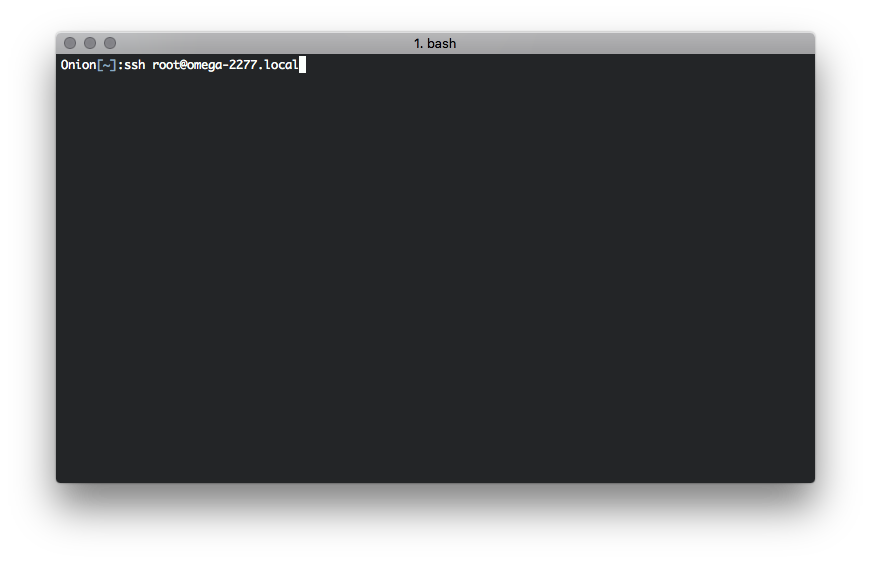
Step 3: Enter Credentials
When prompted, enter the password
By default, the password is: onioneer
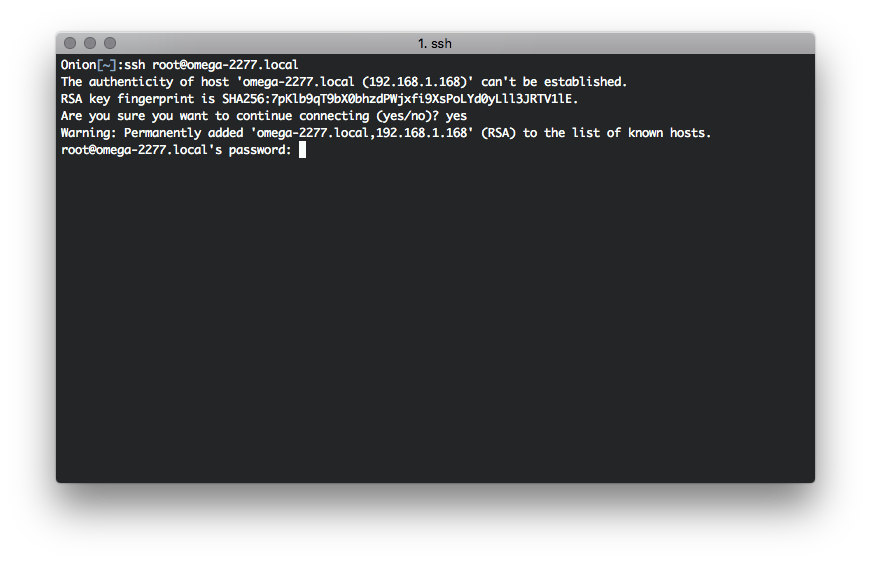
If you’re prompted about adding the address to the list of known hosts, type yes. This is just your computer getting to know the Omega for the first time!
And you’re in!
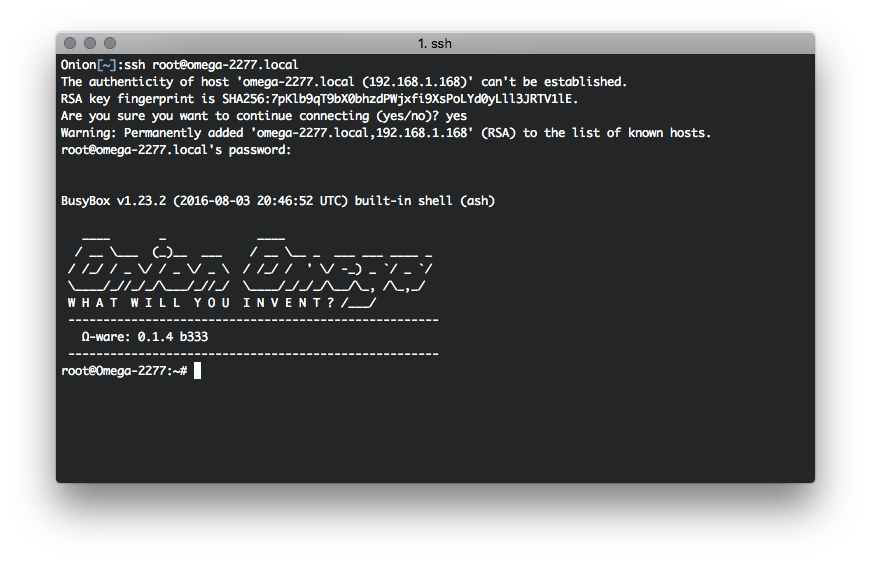
SSH on a Linux device
Step 1: Open a Terminal
Open your preferred Terminal App.
Step 2: Establishing a SSH connection
Run the following command:
ssh root@omega-ABCD.localWhere ABCD is the unique id of your Omega.
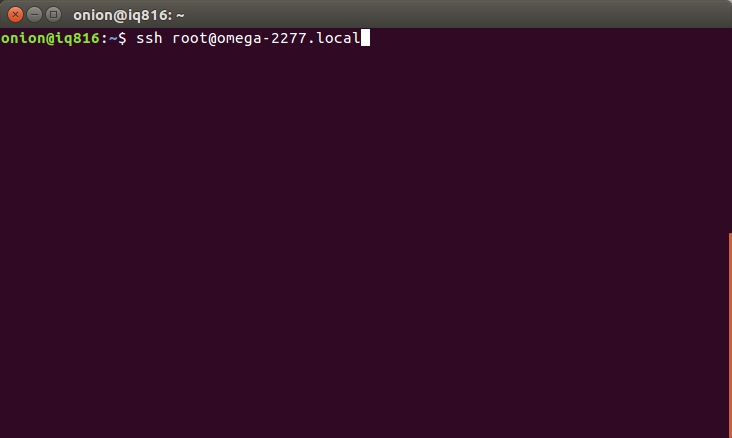
Step 3: Enter Credentials
When prompted, enter the password
By default, the password is: onioneer
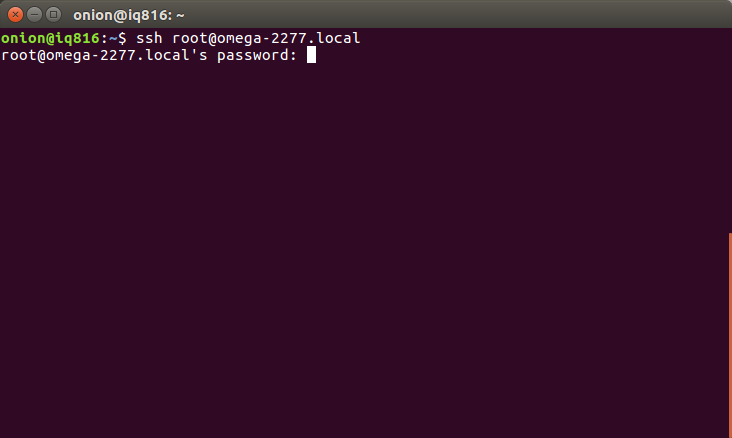
If you’re prompted about adding the address to the list of known hosts, type yes. This is just your computer getting to know the Omega for the first time!
And you’re in!
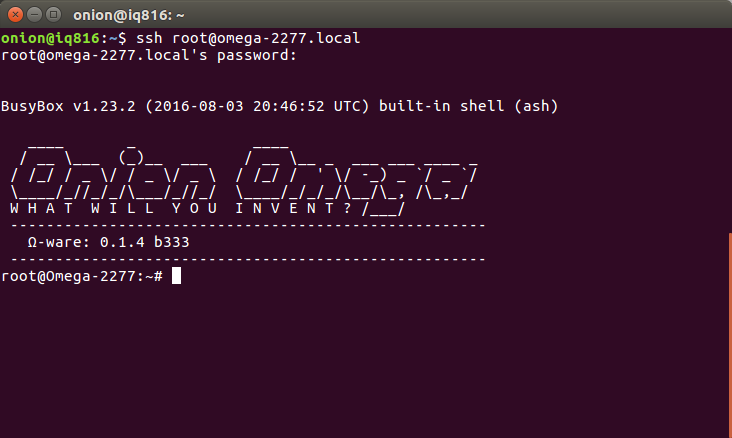
SSH on a Windows Device
Step 1: Download PuTTy
You can find PuTTy here. Look for the putty.exe installer for Windows on intel x86. Once it’s downloaded you can open and use it.
Step 2: Establish a SSH connection
Configure an SSH connection to omega-ABCD.local on port 22:
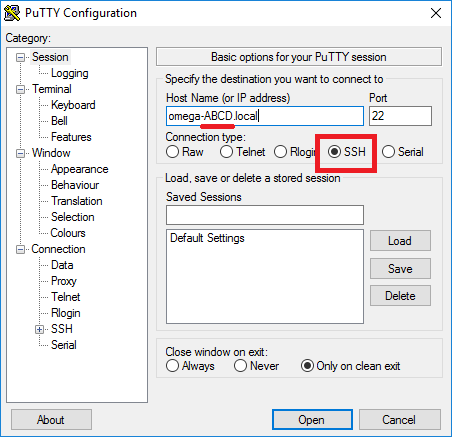
Where ABCD is the unique id of your Omega.
Step 3: Enter Credentials
Click Open and enter the credentials when prompted.
By default, the credentials are:
Username: root
Password: onioneer
And you’re connected!
Using SSH Key Pairs
Over the course of a few months, the number of times you type in the password to connect will add up to a whole bunch of time that could have been spent having fun. Don’t worry, there’s another way to authenticate your SSH connection: SSH Key Pairs.
By using SSH Key Pairs, the Omega and your computer will do a secure handshake so you won’t need to type in that pesky password all the time. Not only that, using a key pair will make your Omega even more secure since passwords can be discovered but secure key pair authentication cannot be broken.
You can skip this step if you want to dive right into using your Omega! You can always come back to it later :)
What are Key Pairs?
Good question! Authentication using a Key Pairs is based on having two randomly generated binary keys, where one is public and one is private.
- The private key is like a handwritten signature, used to prove your identity, so make sure to keep it secret and keep it safe!
- The public key’s only purpose is to verify your identity, and is meant to be shared with other devices.
An SSH connection to your Omega that’s secured by with a key pair will look something like this:
- Your computer will ask to login to the Omega, and the Omega will respond with ‘Ok, but first prove your identity’
- Your computer will then generate a hash using your private key and send it to the Omega
- The Omega will use the stored public key to try to decode the identity hash, if the Public Key matches the Private Key, the decode will be successful, and the Omega will allow the connection to proceed.
Adding your Public Key
The method will be different depending on what Operating System you’re using on the computer used to connect. We’ve included guides for the following:
How to Add your Public Key to the Omega on a MAC
Step 1: Locating Existing Key Pair
Let’s first check to see if your computer already has a key pair. Open the Terminal App on your Mac and run:
ls ~/.ssh/id_rsa.pub
If this file exists, skip ahead to Step 3.
Step 2: Generating a Key Pair
No worries if you don’t have a key yet, follow this quick guide to generate a key pair.
Step 3: Copy Key Pair
Copy the contents of the public key file to the clipboard:
cat ~/.ssh/id_rsa.pubStep 4: Create an Authorized Keys File
Connect to your Omega’s command prompt and create a new file:
vi /etc/dropbear/authorized_keysAnd paste your public key into it.
And you’re done!
From now on, you’ll be able to securely connect to your Omega without having to type out a password every time.
How to Add your Public Key to the Omega on a Linux machine
Step 1: Locating Existing Key Pair
Let’s first check to see if your computer already has a key pair. Open the Terminal App on your Mac and run:
ls ~/.ssh/id_rsa.pubIf this file exists, skip ahead to Step 3.
Step 2: Generating a Key Pair
No worries if you don’t have a key yet, follow this quick guide to generate a key pair.
Step 3: Copy Key Pair
Copy the contents of the public key file to the clipboard:
cat ~/.ssh/id_rsa.pubStep 4: Create an Authorized Keys File
Connect to your Omega’s command prompt and create a new file:
vi /etc/dropbear/authorized_keysAnd paste your public key into it.
And you’re done!
From now on, you’ll be able to securely connect to your Omega without having to type out a password every time!
How to Add your Public Key to the Omega on a Windows machine
Step 1: Locating Existing Key Pair
Let’s first check to see if your computer already has a key pair. Open the Windows Explorer and enter the following as the address:
%HOMEDRIVE%%HOMEPATH%\.ssh\id_rsa.pubIf this file exists, skip ahead to Step 3.
Step 2: Generating a Key Pair
No worries if you don’t have a key yet, follow this quick guide to generate a key pair.
Step 3: Copy Key Pair
Open the public key file with a text editor (Notepad works fine) and copy the contents to the clipboard
Step 4: Create an Authorized Keys File
Connect to your Omega’s command prompt and create a new file:
vi /etc/dropbear/authorized_keysAnd paste your public key into it.
And you’re done!
From now on, you’ll be able to securely connect to your Omega without having to type out a password every time.
Connecting via Serial
The Omega’s command prompt can also be accessed with a USB cable, as long as the Omega’s UART0 is connected to a USB-to-Serial device. This will be the case if you’re using an Omega2 or Omega2+ on an Expansion Dock or Mini Dock, or an Omega2S or Omega2S+ in the Omega2S Development Kit board. What’s happening is that the Omega is using its UART pins to run a terminal, the USB-to-Serial chip found on the Dock is translating the Serial Terminal signals into USB signals that your computer can understand and vice versa.
Generally, we recommend using SSH to access the Omega’s command line, but the serial terminal does have its advantages. For instance, the serial terminal will always be available as long as the Omega is powered on and does not depend on network connectivity. Additionally, when using the serial terminal, you will see messages from the kernel:
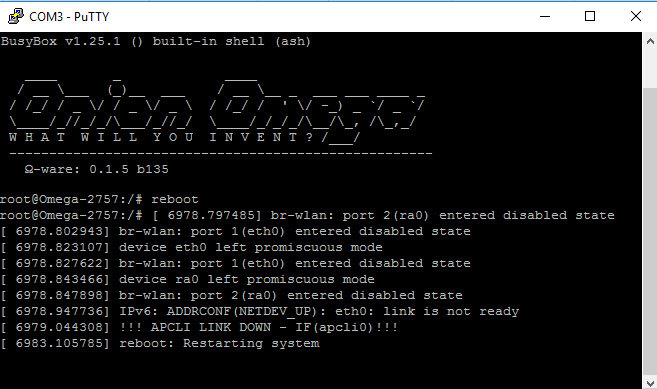
This is an example of a message coming from the kernel. These messages can be listed out at any time using the dmesg command, so they can be seen when using SSH as well.
Note that the Expansion Dock and Mini Dock are the only docks that have USB-to-Serial chips, so the serial terminal will only work when using those docks. The serial terminal is meant for debugging during early development, for stable projects, SSH is the best method for accessing the command line.
We’ll first install drivers, identify the specific USB connection that we need to use to talk to the Omega, and then set up the communication.
Note that your computer might need some additional drivers to recognize the USB-to-Serial device! That’s what we’ll check first
Serial on a Mac Device
Step 1: Download Drivers
Download and install the Silicon Labs CP2102 driver for OS X.
Step 2: Check if Serial Device Exists
Plug in your Omega & Dock and run ls /dev/tty.* to see if the USB-to-Serial device can be detected. If the driver is successfully installed, you should be able to see a device with a name similar to /dev/tty.SLAB_USBtoUART.
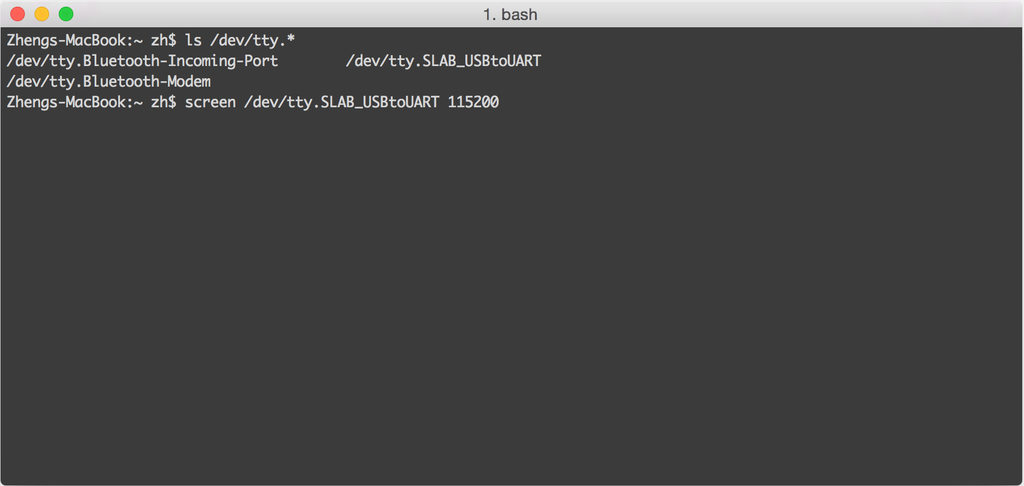
Step 3: Connect
Run screen /dev/tty.SLAB_USBtoUART 115200 to connect to the Omega’s serial terminal using the screen utility.
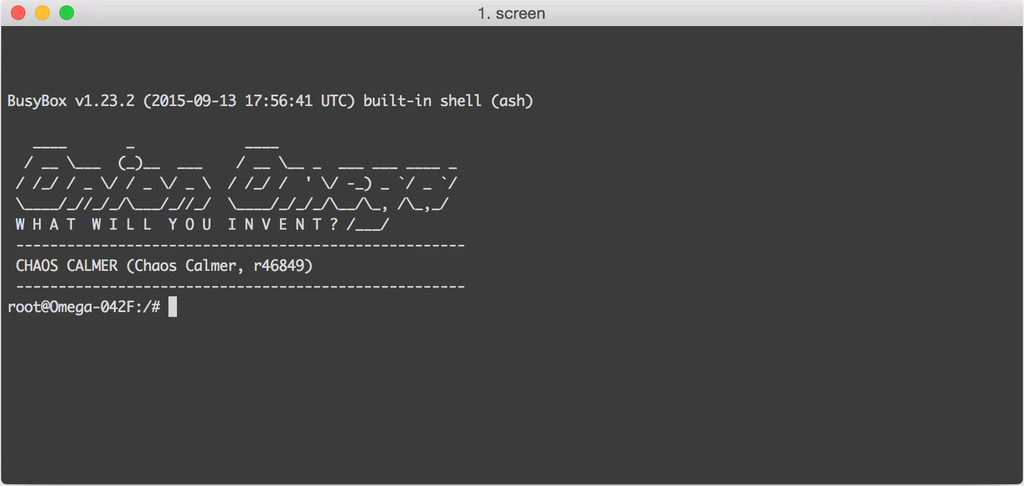
We recommend taking a peek at this tutorial to get an idea of how the
screenutility works.
Step 4: All Done
Enjoy! You’re now connected to your Omega!
Serial on a Windows Device
Step 1: Download Drivers
Download and install the Silicon Labs CP2102 driver for Windows.
Step 2: Find Serial Device
Plug in your Omega & Dock and run Device Manager (Start > Enter “Device Manager” and press ENTER), look for Silicon Labs CP210x USB to UART Bridge under Ports (COM & LPT), and take note of the COM number in bracket.
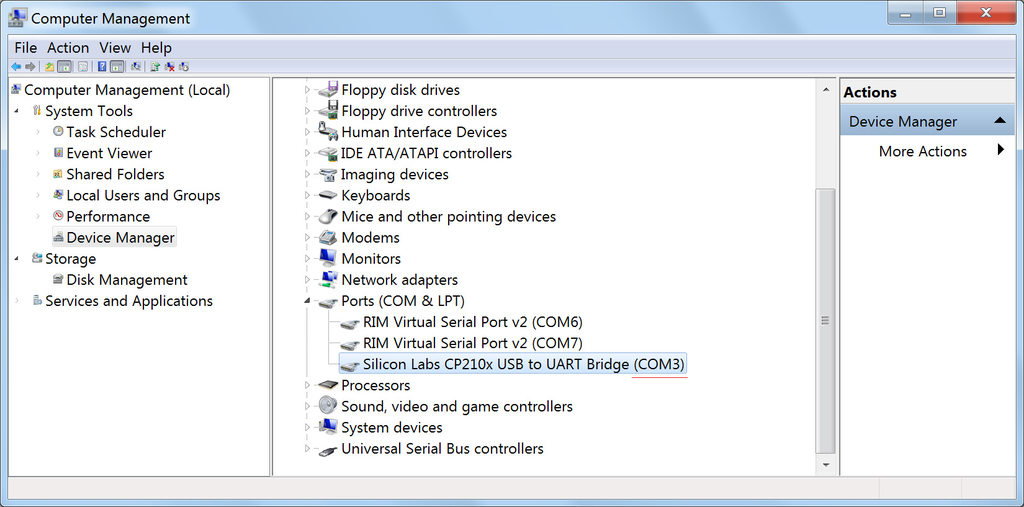
Step 3: Download a Terminal Program
We’ll be using PuTTy, but you can use another terminal program that you like. You can download Putty from this link.
Step 4: Configure the Terminal Program
Open up PuTTy, select Serial for Connection type, enter the COM number noted down in Step 2 as Serial line, and enter 115200 for the speed.
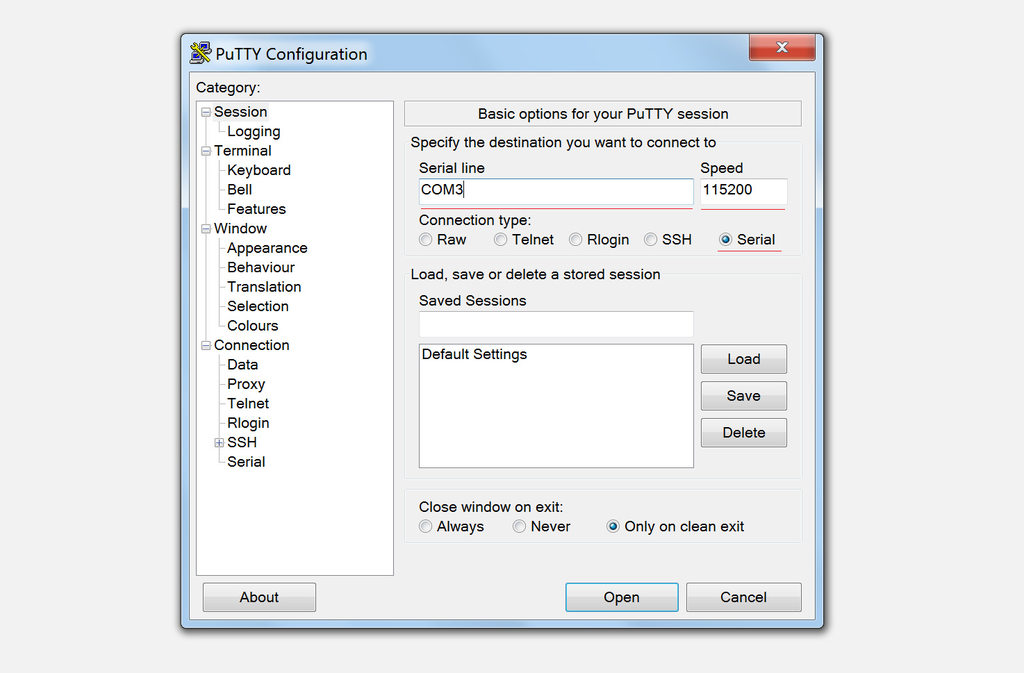
Step 5: Connect
Click on the Open button to connect to the Omega via the serial terminal.
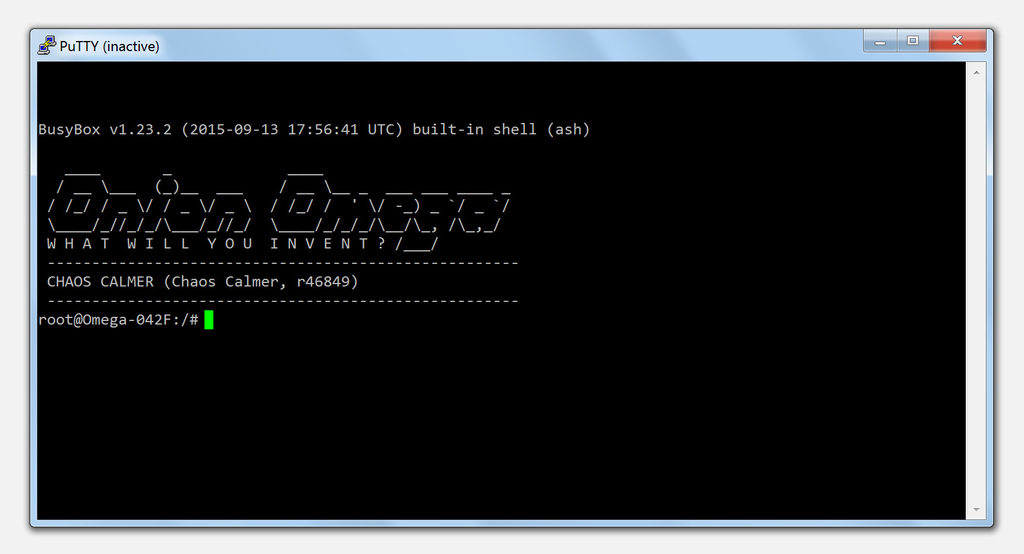
Step 6: All Done:
Enjoy! You’re now connected to your Omega!
Serial on a Linux Device
Step 1: Check if the serial drivers are already installed
Some modern Linux Distros already have the required serial drivers installed. Run modinfo cp210x on the command line, if it outputs several lines of information, the driver is already installed and you can skip ahead to Step 4.
If the output is something along the lines of
modinfo: ERROR: Module cp210x not found.the driver will need to be installed. Continue to Step 2.
Step 2: Download and install the Silicon Labs CP2102 driver source files
For Linux kernel 3.x.x and higher.
For Linux kernel 2.6.x.
Step 3: Build and install the driver
For Ubuntu/Debian:
Unzip the archive.
cd into the unzipped directory.
Compile the driver with make.
sudo cp cp210x.ko /lib/modules/<kernel-version>/kernel/drivers/usb/serial/
sudo insmod /lib/modules/<kernel-version>/kernel/drivers/usb/serial/usbserial.ko
sudo insmod cp210x.ko
sudo chmod 666 /dev/ttyUSB0
sudo usermod -a -G dialout $USERFor RedHat/CentOS:
sudo yum update kernel* //need to update the kernel first otherwise your header n't match
sudo yum install kernel-devel kernel-headers //get the devel and header packages
sudo reboot //your build link should be fixed after your system come backUnzip the archive.
cd into the unzipped directory.
Compile the driver with make.
sudo cp cp210x.ko /lib/modules/<kernel-version>/kernel/drivers/usb/serial
sudo insmod /lib/modules/<kernel-version>/kernel/drivers/usb/serial/usbserial.ko
sudo insmod cp210x.ko
sudo chmod 666 /dev/ttyUSB0
sudo usermod -a -G dialout $USERStep 4: Install screen
Let’s install screen, a command line utility that will allow connecting to the Omega’s serial terminal.
For Ubuntu/Debian:
sudo apt-get update
sudo apt-get upgrade
sudo apt-get install screenFor RedHat/CentOS:
sudo yum update
sudo yum install screenWe recommend taking a peek at this tutorial to get an idea of how the
screenutility works
Step 5: Look for the USB-to-Serial Device
Plug in your Omega & Dock and run ls /dev/ttyUSB* to see if the USB-to-Serial device can be detected. If the driver is successfully installed, you should be able to see a device with a name similar to /dev/ttyUSB0.
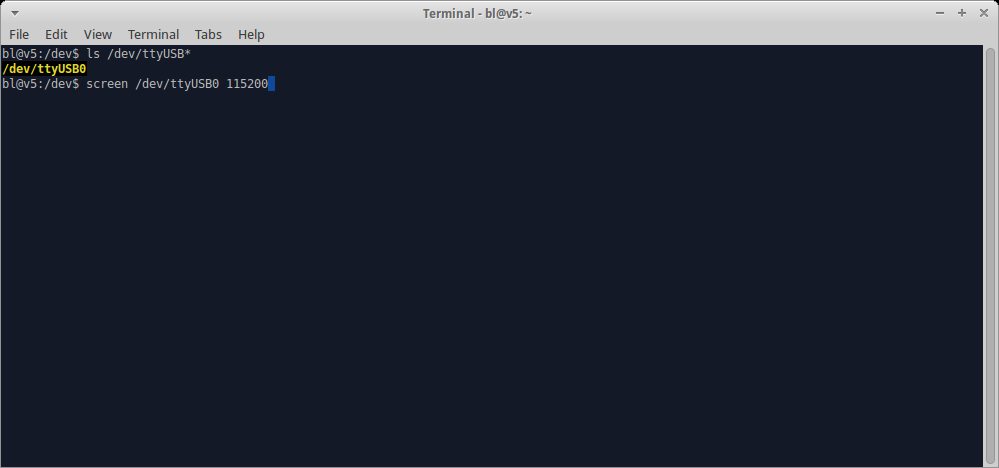
Step 6: Open Screen
Run sudo screen /dev/ttyUSB0 115200 to connect to the Omega’s serial terminal using screen.
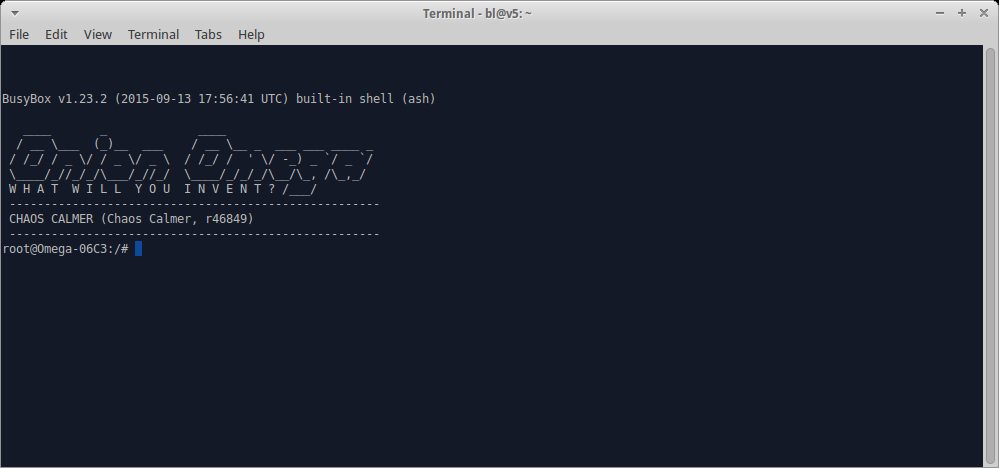
If the screen remains blank, hit enter again to get to the command prompt.
Step 7:
Enjoy! You are now connected to your Omega!